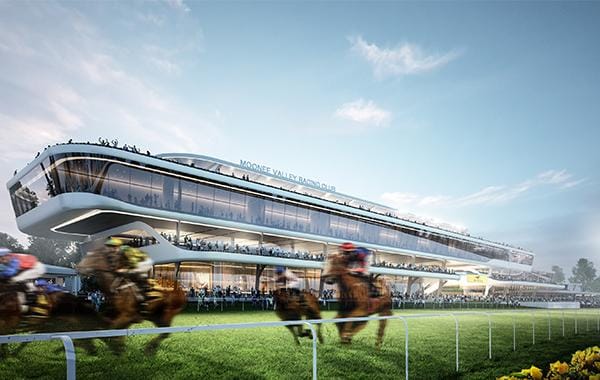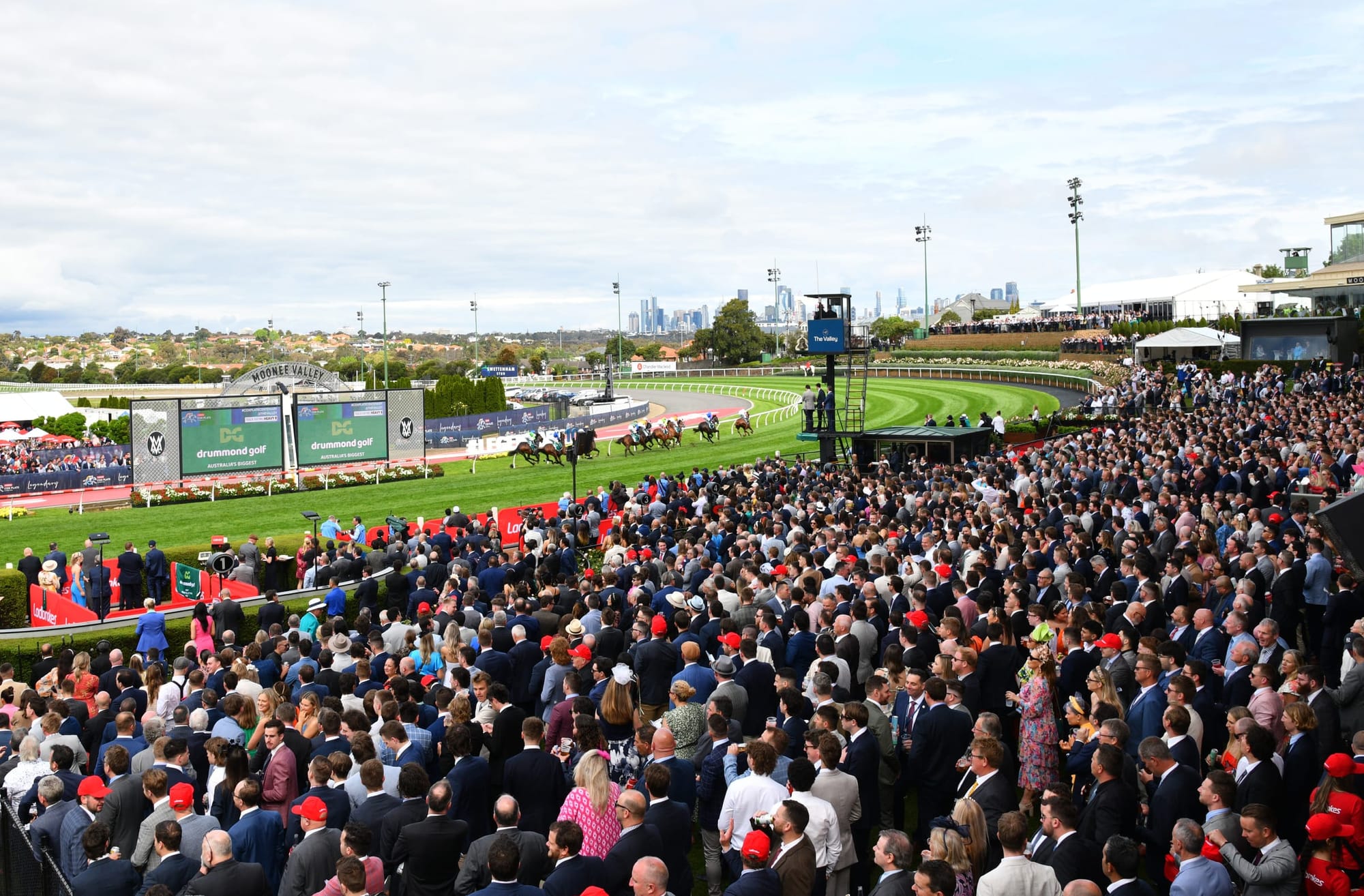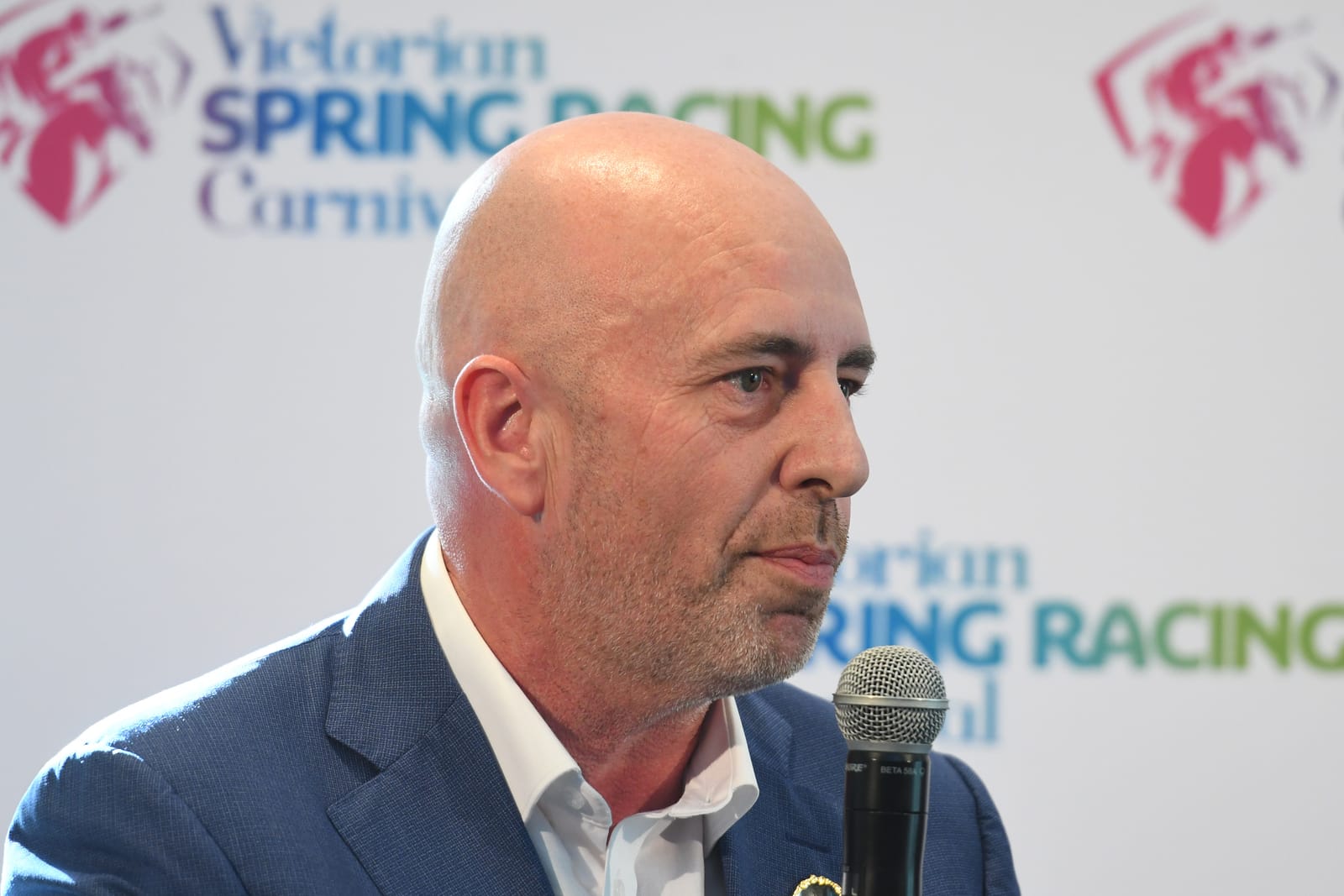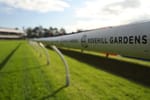On a turf farm east of Melbourne, a central component of one of the most ambitious projects in Australian racing is coming to life.

And if you are Moonee Valley Racing Club chief executive Michael Browell, watching and waiting for grass to grow has never been more inspiring.
With a reimagined future about to become a reality, Browell and his team are preparing the Moonee Valley racecourse as we know it for a rousing send-off at next month’s Cox Plate meeting.
The racetrack, with its idiosyncrasies, which has also doubled as a modern-day spring playground for champions such as Winx, Kingston Town, Northerly, and Sunline, will be reconfigured.
A grandstand with its amphitheatre-like structure and presence will be demolished.
The Moir Stakes meeting last Saturday brought Moonee Valley a step closer to the end of one era and towards the cusp of another, where the first green shoots of a $220 million racecourse redevelopment are literally emerging across the other side of town.
“The new racetrack is currently growing at the Evergreen Farm up at Pakenham. It went in earlier this year, so it's had a full autumn coming into a full spring,” Browell told The Straight.
“We're putting mature turf in rather than seeding the track and it'll stay up at the farm until it needs to be harvested and we’re going with a Kikuyu (grass) track at this stage.
“Then, as it beds down and goes through its first season, we'll over-sow that so that it's cherry ripe for the spring carnival in 2027 when we return to racing.
“We're giving the track plenty of time to consolidate. After it's down for a period of time, we'll have horses on it - trials and jumpouts and gallops - just to open it up, let it repair and let it consolidate.
“And then we're confident that it'll be in great shape when racing relaunches.”
Browell expects the new track to be installed in October 2026, with the first meeting scheduled for August 2027. That timeline is crucial in ensuring just one edition of the Club’s most famous race, the Cox Plate, is held elsewhere, with the 2026 edition slated for Flemington.
The transformation of Moonee Valley has been underway for several years in an example of how the commercialisation of a club’s assets can co-exist with a core business of racing without having to sell the farm.
Apartment building and townhouse developments are near completion, and marketing for another residential stage is about to begin.
Plans for the infield section of the racecourse remain fluid, but they are unlikely to include harness racing.
The Victorian standardbred industry called Moonee Valley home from 1976 until 2010. An inner-city revival of the code had been suggested but it seems the idea has run its race.
“We explored the harness racing opportunity but that's gone quiet both from government and Harness Racing Victoria,” Browell said.
“So I would suggest harness racing won't be returning to the Valley.
“And then we've had negotiations with the AFL and with a couple of golf driving range operators but we've just stalled on that at this stage while we go through and do the rebuild.
“It's something that we plan to revisit once the works are complete. We just need to work out what will complement the racing facility.”

That infrastructure will include a repositioned grandstand, which Browell says will be complemented by temporary facilities for racegoers during major meetings, such as Cox Plate day.
It’s the last remaining piece of the redevelopment puzzle that will fit into place.
The grandstand has been costed within an overall budget that prioritised the racing above anything else.
“We wanted to make sure that we weren't compromising or cutting corners on any of the build, particularly the new racetrack,” Browell said.
“The lights and irrigation systems and turf, we wanted to make sure we had best-in-class for all of that.
“We've taken a view that it needs to be a 365-day facility and then you've got to strike the right blend between the race day functionality and its ability to drive revenue and visitation outside of race days.
“We're making sure that we've got all of the right spaces but the greatest asset that you'll have in that building, whether you call it a grandstand or an event centre or something of a hybrid, you're going to have the most spectacular views back across the track to the Melbourne city skyline.”
When Browell joined the MVRC, he did so with a remit to keep the club a relevant part of the Australian racing landscape.
His appointment coincided with a time of financial uncertainty.
The future of the business, known as an industry innovator under the leadership of chief executives such as Ian McEwen, was clouded.
Moonee Valley had a vision for long-term security, and Browell had to become its architect.

“When I arrived here in 2008, the challenge was put to me to come up with a bold plan that would secure the future of the club,” he said.
“I was walking the track one night, and the idea came to me to realign the track and do a big property development.
“But I never in my wildest dreams thought that it would end up being a $3.5 billion project where we'd have over 2000 apartments, over 5000 people living on site, and the financial returns that the club will secure out of it.”
In David Kobritz, a MVRC board member since 2009, Browell was able to tap into a wealth of knowledge and experience that comes with mega-property deals.
Kobritz is a passionate racing man. He is a commercial breeder via his Musk Creek Farm operation and shared Melbourne Cup and Golden Slipper success as a part-owner of Subzero and Danzero, respectively.
As a director of Deal Corporation, commercial and residential real estate projects are Kobritz’s forte.
Kobritz’s input has been inspirational - and invaluable.
“None of it would have been possible without David, with his dedication to the club and the project,” Browell said.
“He sits on our committee, and it's just great that we can see it all come to fruition.”
While Browell and the club have forged on, the intended renovation of Moonee Valley has been the subject of industry rumour and conjecture for the better part of seven years.
“When I arrived here in 2008, the challenge was put to me to come up with a bold plan that would secure the future of the club,” Moonee Valley Racing Club boss Michael Browell
Some doubted it would ever come to fruition, but as the post-Cox Plate demolition deadline nears, it is clear that it is full steam ahead, with a moment to pause and reflect on what that means.
“It'll be a day tinged with sadness. Moonee Valley is a historic track,” Browell said.
“We will all have wonderful memories of the course, the club, and the great races, the great champions that have graced the turf but we do draw a curtain on it at the end of October
“It's got 142 years of history and 105 years of the Cox Plate, but the way that we see that is one chapter closes and we'll come back and we'll write the new chapter.”




